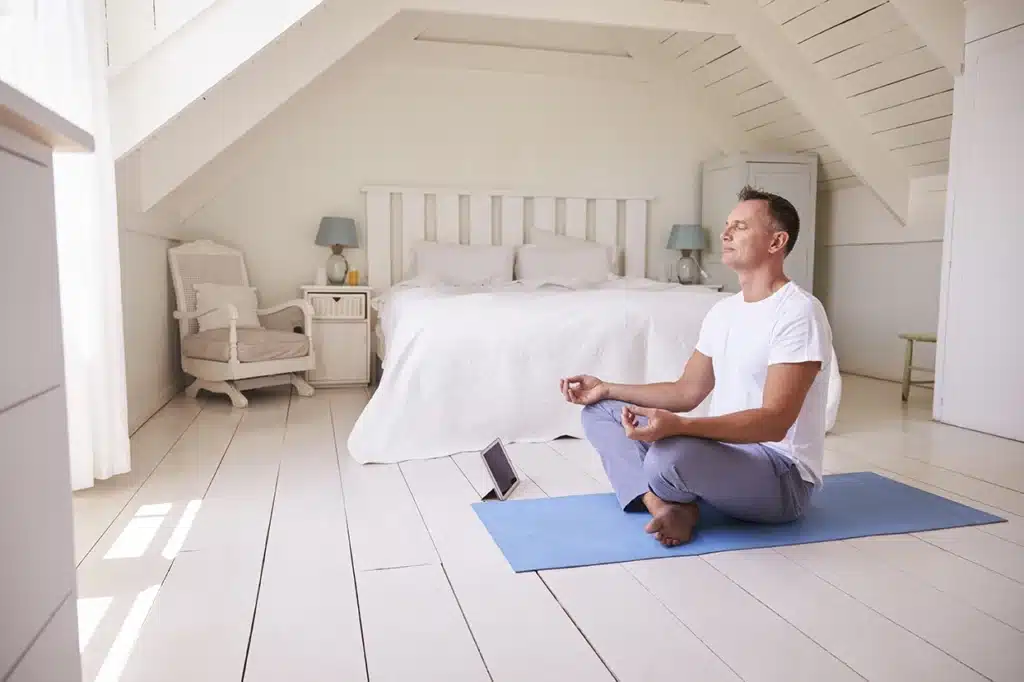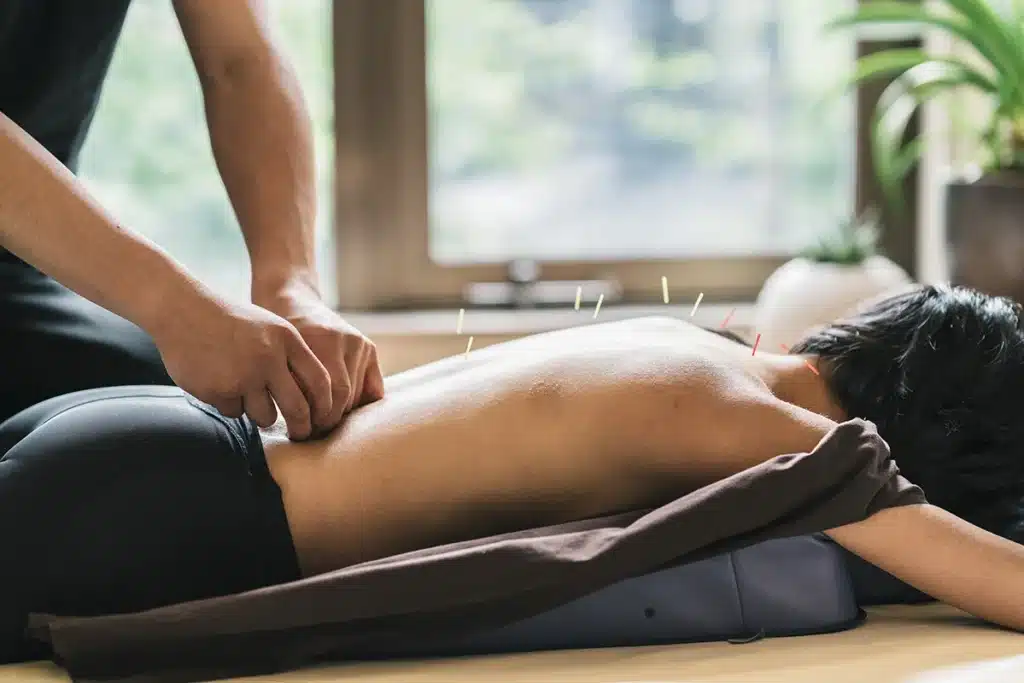
Table of Contents
ToggleLower back pain is a pervasive issue affecting millions worldwide. It’s the kind of discomfort that creeps into your life, affecting everything from your ability to work to your simple daily movements. In this comprehensive guide, we’ll explore lower back pain treatment in detail, offering expert advice for relief and recovery.
Whether you’re dealing with a temporary ache or chronic pain, understanding the root causes and effective treatment options is the first step towards regaining your quality of life.
Lower back pain can be more than just an inconvenience; it’s often a significant barrier to enjoying a full and active life. But what causes this pain?
Understanding the origins is crucial for effective lower back pain treatment. Common culprits include muscle strains, aging-related wear and tear, or injuries.
Sometimes, lifestyle factors like poor posture or sedentary habits contribute to this discomfort. Knowing whether your pain is temporary or chronic is essential, as it guides the treatment approach.
Chronic pain, lasting more than three months, often requires a different strategy than a short-term muscle strain.
Medical experts emphasize the importance of an accurate diagnosis. Each back pain case is unique, and what works for one person might not be effective for another.
Thus, a personalized assessment is vital. It’s also important to consider how your daily activities, such as sitting for long hours or physical strain, might be contributing to your pain. Recognizing these factors can help in tailoring the right lower back pain treatment plan for you.
When it comes to lower back pain treatment, the medical field offers a range of options. From medications to more invasive procedures, understanding the risks and benefits of each is key.
Standard treatments like pain relievers and anti-inflammatory drugs are often the first line of defense. In more severe cases, surgical options might be considered.
However, it’s crucial to weigh the potential benefits against the risks. Surgery, for example, may offer relief but also comes with its own set of risks and a longer recovery period.
Recent advancements in medical treatments have opened up new possibilities for those suffering from chronic lower back pain. Innovative techniques and minimally invasive procedures are continually being developed, offering hope for more effective and less risky treatments.
It’s essential to have open and honest conversations with your healthcare provider about these options. Discussing the latest treatments and understanding their applicability to your situation can lead to more effective lower back pain treatment.

Not all lower back pain treatment methods require a visit to the doctor. Simple home remedies and lifestyle adjustments can often provide significant relief.
For instance, maintaining a healthy weight can reduce the strain on your back. Simple exercises and stretches can enhance flexibility and strengthen the back muscles, offering both immediate relief and long-term benefits.
Adjusting your diet to reduce inflammation – cutting down on processed foods and increasing your intake of fruits, vegetables, and whole grains – can also make a difference.
Creating a back-friendly environment at home and work is another key aspect of lower back pain treatment. Ergonomic chairs, standing desks, and regular breaks to stretch and move around can prevent pain from worsening.
Remember, the goal is to support your back in its natural alignment and avoid putting unnecessary strain on it. Small changes in your daily routine can lead to significant improvements in your back health.
Physical therapy is a cornerstone of effective lower back pain treatment. A physical therapist can guide you through specific exercises that target the root cause of your pain.
These exercises aim to improve flexibility, strengthen the core muscles, and correct posture. The therapist’s expertise can ensure that the exercises are done safely and effectively, maximizing their benefit.
The success of physical therapy in treating lower back pain is well-documented. Through a combination of manual therapy, guided exercises, and education on body mechanics, physical therapists help patients regain mobility and reduce pain.
It’s about more than just treating the symptoms; it’s about equipping you with the tools and knowledge to prevent future pain episodes. If you’ve been struggling with chronic back pain, consulting with a physical therapist could be a game-changer in your recovery journey.

Mindfulness and stress reduction are increasingly recognized as vital components of lower back pain treatment. Chronic pain is not just a physical experience; it has emotional and psychological dimensions as well.
Techniques like mindfulness-based stress reduction (MBSR) can play a significant role in managing pain. This practice involves focusing on the present moment and acknowledging pain without judgment.
By reducing stress and anxiety, these techniques can lessen the intensity of pain.
Incorporating mindfulness into your daily routine doesn’t require hours of meditation. Simple practices like deep breathing, mindful walking, or even mindful eating can help.
The key is to bring a sense of awareness and presence to your daily activities. Studies have shown that patients who adopt these practices often report a reduction in pain levels and an improvement in their ability to cope with chronic pain.
Yoga and tai chi are also excellent for combining physical movement with mindfulness. These activities promote flexibility, strength, and mental relaxation, all of which are beneficial for lower back pain treatment.
The gentle movements and focus on breathing can help to release tension in the back muscles and improve overall wellbeing.
Effective lower back pain treatment often requires navigating the complex healthcare system. It’s important to know how to communicate effectively with your healthcare providers.
Prepare for your appointments by writing down your symptoms, how they affect your daily life, and any questions you have. This preparation can help you make the most of your time with your doctor.
Understanding the different roles of healthcare providers in treating back pain is also crucial. General practitioners, physiotherapists, pain specialists, and surgeons all play different roles.
Knowing who to consult for specific aspects of your pain can streamline your treatment process.
Dealing with insurance and understanding the costs associated with treatment can be challenging. It’s important to research your insurance coverage and discuss cost-effective treatment options with your provider.
Don’t hesitate to ask for a second opinion if you’re uncertain about a recommended treatment. Advocating for yourself is key in receiving the best possible care.

Exploring alternative medicine can be a valuable part of lower back pain treatment. Treatments like acupuncture, chiropractic care, and massage therapy have gained popularity for their potential to relieve pain without the need for medications or surgery.
Acupuncture, for instance, involves the insertion of thin needles into specific points on the body, which can help alleviate pain and promote relaxation.
Chiropractic care focuses on the alignment of the spine and can be particularly effective for certain types of lower back pain. A chiropractor’s adjustments can help reduce pain, increase mobility, and improve overall function.
Massage therapy, too, offers benefits, especially for pain caused by muscle tension and stress. It’s important to consult with your healthcare provider before starting any alternative treatments to ensure they are appropriate for your specific condition.
Prevention is a crucial aspect of lower back pain treatment. While it’s important to address existing pain, taking steps to prevent future episodes is equally vital.
This includes maintaining a healthy lifestyle, with regular exercise and a balanced diet. Exercises that strengthen the core muscles can provide better support for the back, reducing the risk of injury and strain.
Good posture, both while sitting and standing, can also prevent unnecessary stress on the back. Ergonomic adjustments in the workplace and at home can make a significant difference.
Additionally, being mindful of how you lift heavy objects and avoiding sudden, awkward movements can help keep your back healthy.
Dealing with chronic lower back pain can be a lonely journey, but it doesn’t have to be. Seeking support from community groups, either online or in person, can provide emotional and practical support.
Sharing experiences with others who understand what you’re going through can be incredibly validating and helpful.
Ongoing management of lower back pain involves regular check-ins with your healthcare providers and staying informed about new treatment options. Keeping a pain diary can be useful for tracking your symptoms and identifying triggers or effective relief strategies.
Remember, managing lower back pain is often a long-term commitment, and staying proactive is key to maintaining your quality of life.

Empowerment is a critical element in the journey of lower back pain treatment. Educating yourself about your condition, treatment options, and lifestyle changes that can aid in pain management puts you in the driver’s seat of your health.
It’s about taking an active role in your treatment and working collaboratively with your healthcare team.
Being open to trying different treatment methods, whether they’re traditional or alternative, and being honest with your healthcare provider about what is or isn’t working for you is important. Self-advocacy and a willingness to adapt your approach as needed can lead to more effective management of your lower back pain.
As we conclude this detailed guide on lower back pain treatment, it’s clear that managing lower back pain is a multifaceted endeavor. It involves understanding the causes, exploring various treatment options, and making lifestyle changes.
Remember, every individual’s experience with lower back pain is unique, and what works for one person may not work for another.
We encourage you to approach your lower back pain treatment with an open mind and a proactive attitude. Seek out the advice of professionals, consider alternative treatments, and make lifestyle adjustments that support your back health.
Most importantly, remember that you are not alone in this journey. There are resources, support systems, and a wealth of information available to help you navigate this path.
We hope this guide has provided you with valuable insights and practical tips to aid in your lower back pain treatment. If you have any additional questions or need further information, please don’t hesitate to reach out to us or consult with a healthcare professional.
Thank you for joining us on this journey towards understanding and managing lower back pain. We wish you the best in your pursuit of relief and recovery.
GET IN TOUCH +
285 Sills Road
Building 5-6, Suite E
East Patchogue, NY 11772
(631) 475-5511
184 N. Belle Mead Road
East Setauket, NY 11733
(631) 675-6226
GET IN TOUCH +
285 Sills Road
Building 5-6, Suite E
East Patchogue, NY 11772
(631) 475-5511
184 N. Belle Mead Road
East Setauket, NY 11733
(631) 675-6226
SUBSCRIBE TO OUR NEWSLETTER +
Send us a Google review. Click this link and let us know how we did!
Review us on Yelp too.